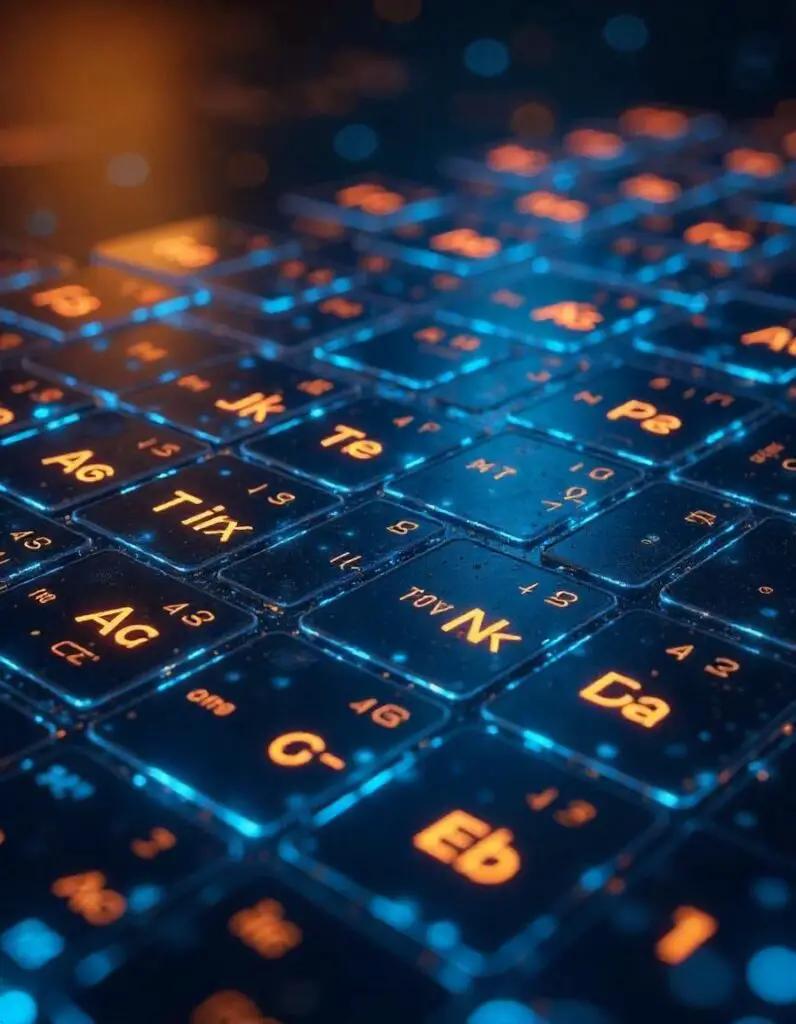Discover how MIT’s periodic table of machine learning is revolutionizing AI by connecting classic algorithms and enabling the creation of smarter models.
The Periodic Table of Machine Learning: A Groundbreaking Framework to Accelerate AI Discovery
Published: April 23, 2025
By: Siwz Editorial Team
Introduction: A Paradigm Shift in Machine Learning

Machine learning (ML) has witnessed explosive growth over the past decade, shaping industries from healthcare to finance, and from transportation to entertainment. Despite its widespread use, the development of new ML algorithms has traditionally been a fragmented process. That’s changing now, thanks to a revolutionary discovery by researchers at the Massachusetts Institute of Technology (MIT): the Periodic Table of Machine Learning.
This new framework connects seemingly disparate algorithms under a unified mathematical structure, streamlining innovation and enabling faster, smarter AI development. Let’s explore how this discovery, known as Information Contrastive Learning (I-Con), is reshaping the field.
The Foundations of Machine Learning Algorithms
Before diving into the new framework, it’s essential to understand the current landscape of ML. Algorithms like logistic regression, decision trees, support vector machines, and clustering methods each serve different purposes.
Traditionally, these algorithms are treated as isolated tools, each requiring unique design, training strategies, and tuning methods. This siloed approach slows progress and makes it difficult to combine ideas across subfields. Despite this, researchers have long suspected that many ML algorithms share a common underlying purpose: learning meaningful relationships from data.
MIT’s discovery confirms this suspicion and offers a formal way to visualize it.
What Is the Periodic Table of Machine Learning?
Inspired by the periodic table of elements in chemistry, the Periodic Table of Machine Learning organizes over 20 classical ML algorithms based on their mathematical relationships. Each algorithm is a different way of approximating a core equation that models data relationships. This visualization allows scientists to compare and categorize algorithms more intuitively than ever before.
But this isn’t just a pretty diagram—it’s a functional toolkit. At the core of the table is a unifying equation developed under the I-Con framework, which provides the foundation for understanding, improving, and even inventing machine learning algorithms.
Birth of the I-Con Framework
The I-Con framework came to life through an accidental but insightful observation. While exploring clustering and contrastive learning techniques, MIT graduate student Shaden Alshammari noticed surprising similarities. These two methods, typically viewed as unrelated, shared a common structure when expressed mathematically.
This observation snowballed into a deeper investigation. Together with Mark Hamilton—a senior engineering manager at Microsoft—and other team members, they discovered that many classic algorithms could be described using variations of the same core objective.
This realization led to the development of the I-Con equation, which now anchors the entire periodic table of machine learning.
How Does the Framework Work?

The Information Contrastive Learning (I-Con) framework generalizes how different ML methods approximate real-world relationships between data points. Algorithms that fall into this framework include:
- Clustering algorithms (like K-means)
- Contrastive learning models (used in vision and NLP)
- Matrix factorization techniques
- Classification models (like logistic regression)
By breaking each algorithm down into how it processes similarities and differences between data points, the researchers created a “periodic” structure. Think of it as placing each algorithm in a grid, where similar techniques are grouped together. This helps identify not only how algorithms relate, but also where gaps—or opportunities for new models—exist.
Real-World Applications and Performance Boosts
To validate the I-Con framework, the team used it to combine ideas from contrastive learning with image clustering—an area where traditional models struggle with unlabeled data.
Using this hybrid approach, they created a new algorithm that beat existing methods by 8% in accuracy. Even more impressively, this model required less computational power and generalized better to new datasets.
They also showed that bias-reduction techniques from contrastive learning could enhance clustering methods, demonstrating the real-world power of cross-pollinating ideas using the I-Con framework.
Use Case Highlights:
- Medical Imaging: Improved diagnostic accuracy using hybrid algorithms
- E-Commerce: Smarter product recommendations through enhanced clustering
- Finance: Better fraud detection models by fusing anomaly detection with contrastive learning
- Autonomous Vehicles: Real-time decision-making through faster, more adaptive ML models
A Design Toolkit for AI Engineers
Beyond performance improvements, the Periodic Table of ML serves as a design tool. It provides researchers with a bird’s-eye view of existing techniques and highlights pathways to invent new ones. This reduces the need for random experimentation and fosters systematic innovation.
For example, if two algorithms lie adjacent on the table, their mathematical similarities suggest they can be combined. This predictive capability mirrors how early chemists used the chemical periodic table to discover new elements.
Expert Insights: A Rare Unification
AI experts have welcomed the framework with enthusiasm.
“Papers that unify and connect existing algorithms are of great importance, yet extremely rare. I-Con is a model for how we can organize and extend machine learning theory,” says Yair Weiss, Professor of Computer Science at the Hebrew University of Jerusalem.
The framework’s elegance lies in its simplicity and versatility. It doesn’t replace current algorithms—it illuminates their relationships, allowing scientists to build upon them more easily.
The project received support from the Air Force AI Accelerator, National Science Foundation, and Quanta Computer, indicating its significance in both academic and industry circles.
Future Impact and Predictions

As AI continues to evolve, frameworks like I-Con will likely play a key role in:
- Reducing development time for new algorithms
- Increasing transparency and explainability in AI systems
- Enabling more ethical AI by understanding model behaviors better
- Fostering cross-disciplinary collaboration
Moreover, educational institutions may incorporate the periodic table into ML courses to help students grasp the mathematical relationships between algorithms earlier in their training.
Conclusion
The Periodic Table of Machine Learning isn’t just a visualization—it’s a revolutionary framework that connects decades of algorithmic development into a single, navigable system. By revealing a unifying equation and enabling predictive innovation, the I-Con framework promises to accelerate AI breakthroughs in ways we’ve only just begun to imagine.
Whether you’re a data scientist, academic researcher, or tech entrepreneur, this new toolkit offers a smarter, faster route to creating the next generation of intelligent systems.
FAQs
Q1: What is the periodic table of machine learning?
A: It’s a visual and mathematical framework created by MIT to show how classic ML algorithms are interconnected.
Q2: What does I-Con stand for?
A: Information Contrastive Learning, the unifying equation behind the framework.
Q3: How does this framework improve algorithm performance?
A: It helps identify ways to combine and enhance algorithms, leading to more efficient and accurate models.
Q4: Has this been used successfully?
A: Yes, it has led to new models that outperform state-of-the-art solutions by 8% in image clustering.
Q5: Can it be used by non-experts?
A: With proper training, yes. The framework simplifies understanding of ML algorithm relationships, making it useful even for students and junior engineers.
